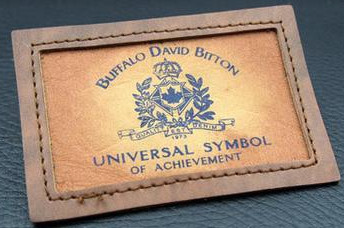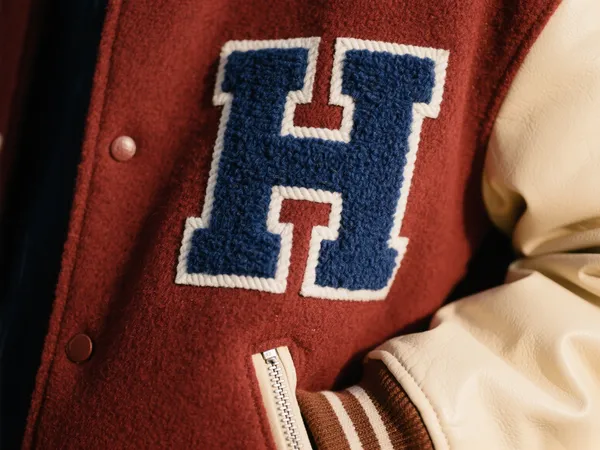In this guide, we’ll explore what leather patches are, their diverse applications, key materials, and the intricate craftsmanship behind their production. Discover how the right رقعة جلدية can transform your product’s appeal and reinforce your brand’s prestige.
A leather patch is more than just a label—it’s a statement of quality, craftsmanship, and brand identity. Whether stitched onto denim, bags, or outerwear, custom leather patches serve as a timeless mark of authenticity and style. From rugged natural textures to sleek embossed designs, these patches enhance both aesthetics and functionality, making them a favorite choice for fashion brands and manufacturers.
CONTENTS
- 1.What is a leather patch
- 2.Uses of leather patches
- 3.Functions of leather patches
- 4.Materials of leather patches
- 5.Manufacturing processes of leather patches
- summary
1. What is a Leather Patch?
A leather patch is a decorative element made from leather, often embossed with a company’s logo or brand name, and prominently affixed to the exterior of a product. It is widely used in denim apparel, bags, racing suits, and outdoor sportswear, serving as a standout decorative feature. Leather patches offer a distinctive visual and tactile appeal, conveying a rugged, wild, natural, and unrestrained aesthetic.

2. Uses of Leather Patches
Leather patches are commonly used on jeans, shoes, hats, bags, outerwear, keychains, and various decorative accessories.




3. Functions of Leather Patches
3.1 Decorative Function
Leather patches often feature unique brand logos, making the brand instantly recognizable. Some designs are highly creative, enhancing brand visibility while elevating the product’s overall quality.

3.2 Symbol of Prestige
A well-designed leather patch highlights the uniqueness and strength of the brand. For well-known brands, the patch itself can be iconic. Higher-quality materials in the patch often signify a more premium brand image.

3.3 Practical Functionality
Leather patches help stabilize jeans when worn, especially in combination with belts, preventing slippage and enhancing the fit. Unlike smaller fasteners, they are less prone to falling off, making them highly practical.

3.4 Authenticity Verification
Leather patches are also a means to verify the authenticity of clothing. Major brands pay meticulous attention to detail and use high-quality materials, making the patch a key indicator of genuine craftsmanship.

4. Materials of Leather Patches
In today’s market, leather patch materials generally fall into three categories: genuine leather, recycled leather, and synthetic leather.
- Genuine Leather: Natural leather derived from animal hides. Common types include cowhide, sheepskin, and pigskin. Luxury options include crocodile and ostrich leather.

- Recycled Leather: Made from leftover leather scraps that are crushed and bonded with chemical agents to create new material. A popular example is microfiber leather.

- Synthetic Leather: Also known as faux leather, it includes materials like PVC and PU. PU leather is the most commonly used type in this category.

5. Manufacturing Processes of Leather Patches
Leather patch production typically involves several key techniques such as embossing, printing, cutting, stitching, laser engraving, embroidery, metalwork, and material combinations.
5.1 Embossing (Heat Pressing)
Using high-frequency machines to heat-press logos and patterns onto the leather surface. Also known as electric embossing or high-frequency pressing—different names, same principle.

5.2 Printing
Logos and designs are printed onto the leather surface using techniques like screen printing. Print quality affects durability, colorfastness, and overall lifespan.

5.3 Cutting
Leather is cut into pre-designed shapes using cutting machines and molds. This process is relatively straightforward and essential for achieving the desired form.

5.4 Stitching
Stitching is applied to enhance visual appeal or functionality, often used when integrating the patch with other products. It also allows for more complex shapes and styles.

5.5 Laser Engraving
Laser machines engrave logos and patterns onto the leather surface with high precision. Laser-etched patches perform well in washing tests and are increasingly popular.

5.6 Embroidery
Embroidery machines use threads to stitch logos or designs onto the leather, or sew woven labels directly onto the patch for added texture and appeal.

5.7 Metal Hardware
Metal elements are riveted onto the leather patch, often bearing logos or decorative designs. This combination enhances branding and durability.

5.8 Material Combination
Mixing different materials or techniques on a single patch to enhance logo expression and brand allure, offering a more dynamic visual impact.

ملخص
As a vital decorative element in apparel, bags, and other products, leather patches not only carry brand identity and a symbol of quality but also add a rugged and natural charm through unique materials and craftsmanship. Whether using genuine, recycled, or synthetic leather, or employing advanced techniques like embossing, laser engraving, or embroidery, the creation of a leather patch must balance aesthetics and functionality.
Qinghan is a professional leather patch manufacturer with 26 years of experience. We have built a comprehensive leather supply chain and offer reliable, professional, and all-in-one support for your custom needs. From brand logo design to material and process optimization, we are committed to helping clients create leather patch solutions that are both distinctive and high-quality—enhancing product appeal and market competitiveness.



